Hannes Ludescher was born in Feldkirch, where he also went to school. He lived with his family in Altenstadt. He studied at the Academy of Fine Arts in Vienna and has been working with manageable stones for over 30 years. The weightless, scaled up stone, with an interior hazelwood frame and painted skin of paper leaves the ground and conquers the airspace. His profession also allows him to follow his hobbies: Hiking along the coasts, collecting stones and earth, playing the violin together with friends (Werner Hasler, Markus Brandtner, Ulrich Kathan) to ‘home-made’ music, also to his video projections. Since 1977 he has been married to Monika, whose studies of pre- and early history were an important source of inspiration. They have three grown-up children, all of them active in design, and two grandchildren. Hannes Ludescher lives in Suldis in Vorarlberg and is 74 years old.
Where and how did you grow up?
As the second boy of postal clerk and nature lover Josef, and Hilda, my inspiring mother, we lived as lodgers in a small farm during my childhood years. The life and death of the animals was one of my most formative experiences, as was the post-war barrenness and teachers traumatised by the war. Moving into a new house shaped my two younger siblings completely differently.
Could you describe your professional background?
Secondary school and then teacher training college in Feldkirch, 1968 to 1976 the study of painting and sculpture at the Academy of Fine Arts in Vienna. A short-term teaching position at my former school. Actually, my career began some time after the Academy. In the room of Monika, my future wife, were stone tools from Egypt and warm-coloured watercolours with motifs from the desert hung on the wall. These two themes brought me back ‘down to earth’ and helped me to break away from academic taboos and develop something of my own. Many Mediterranean watercolours contributed to my livelihood in the first years, then later the ‘stones’. Together with my wife, I worked on archaeological excavations in Iraq and Iran. With the family we went on numerous painting trips to various Spanish regions, Crete, the Peloponnese, Sardinia and Sicily.
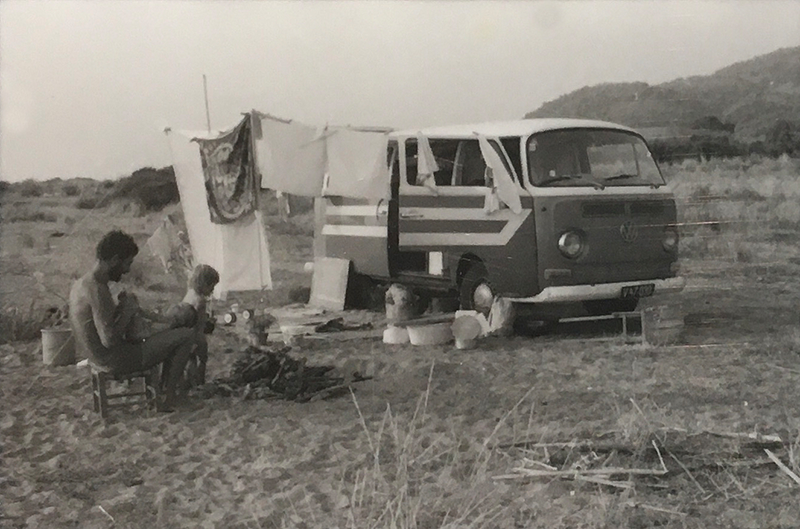
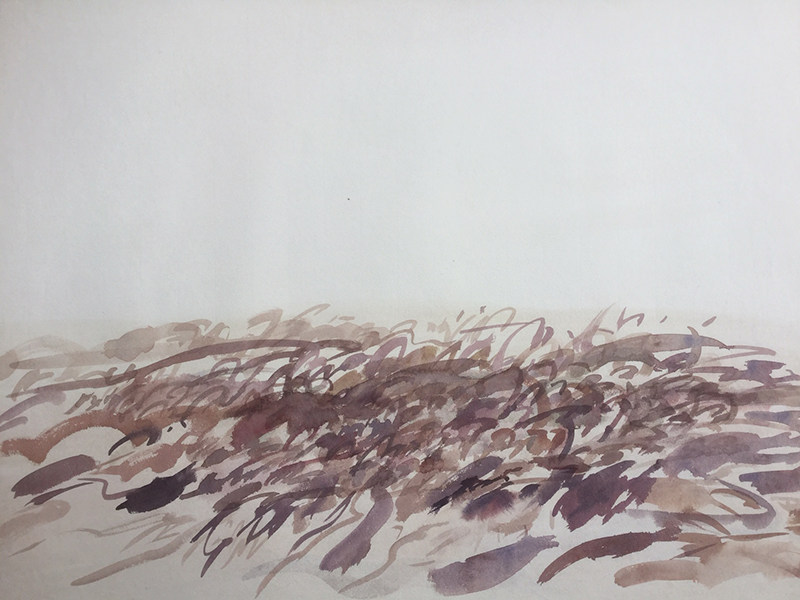
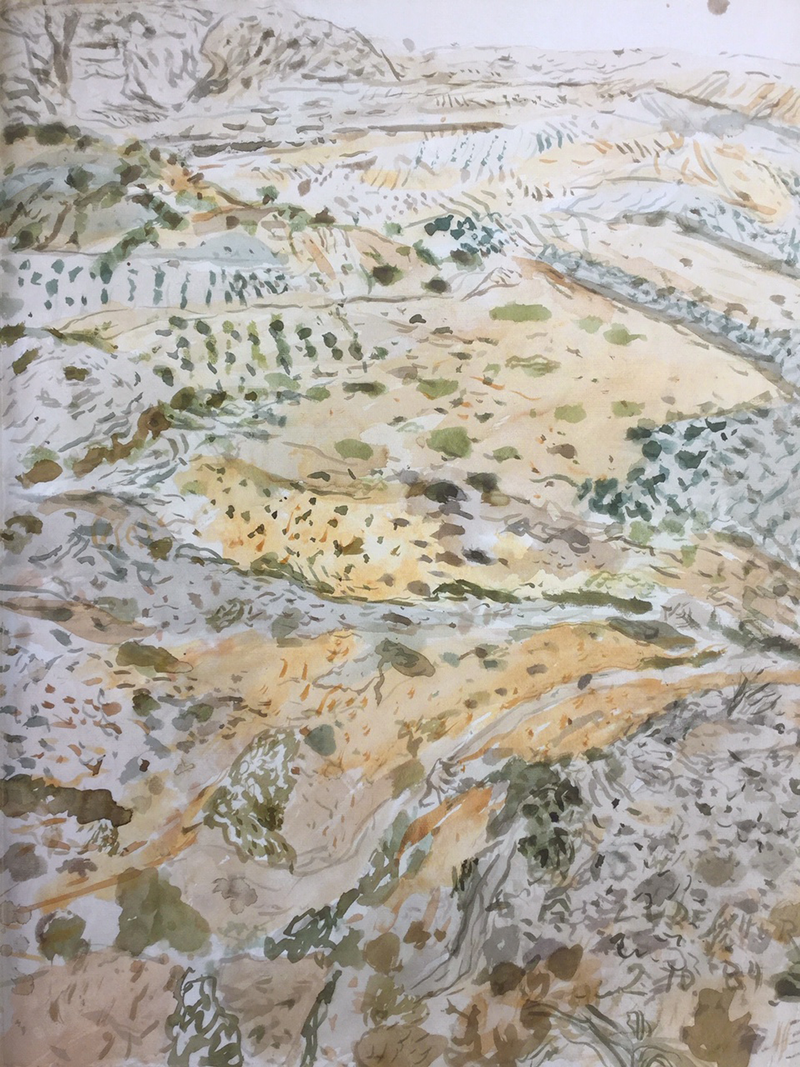
Were there certain events or stations that were formative for your career?
Travelling at a young age with my older brother, hitchhiking or in a 2CV car with a sleeping bag, I went to Holland, the Scandinavian countries, Spain and France. In the many painting galleries we visited the naive desire grew to do the same as these painters. I was also lucky enough to experience the nearby princely painting collection in Vaduz. And in the mid-sixties there was a small gallery in Götzis where I saw drawings by Klimt and Schiele, alone and very close…
The building of a new house was also formative: after living in an old farmhouse – substandard – for ten years, we built a simple wooden house with a workshop, in large parts ourselves, in Suldis over thirty years ago, planned by Baumschlager/Eberle. The filigree wooden construction on pillars gave the decisive impulse for the method for building my stones’.
In the summer of 1989 when we moved into the new house, I saw in Paris colourfully painted coffins by Kwane Kwei from Ghana: another inspiration in the creation of the ‘stones’. And at the beginning of November in Spain we heard about the fall of the Wall: this was a great relief for me after many years of polarisation, which was always present in Vienna not far from the Iron Curtain. A new beginning opened up…
Were there certain people who were formative for your career?
In addition to the benevolent drawing teachers, a chaplain, who was still young at the time, encouraged me and gave me assignments. He also took me to Martin Häusle’s glass house on the Blasenberg. He was THE artist with his landscapes and stained glass windows! However under that chaplain, following the spirit of the times, the paintings and figures of the 19th century were removed from the parish church, destroying an essential experience of my childhood years.
Much later it was the filigree architecture of Buckminster Fuller and Frei Otto and the mobiles of Alexander Calder.
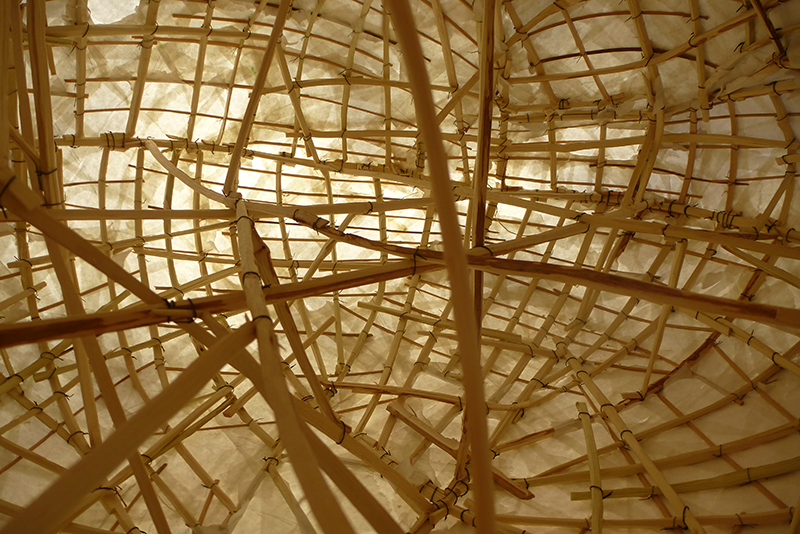
Has your environment supported you in your career?
My father came from a musical family and had been good at drawing in his youth. I was usually able to fulfil my mother’s artistic wishes, my brother as a budding graphic artist later brought the first exhibition catalogues from Vienna, my aunt from Munich supported me, my godfather gave me a subscription to an Italian art magazine… And drawing brought me the recognition at school that I was denied in the ‘important’ subjects.
What are your current activities?
As I have done for many years, I seek to capture and transform the individuality of a stone as best I can with my technical prerequisites – actually every day and evening. And if possible this year, the sea also wants to be painted again.
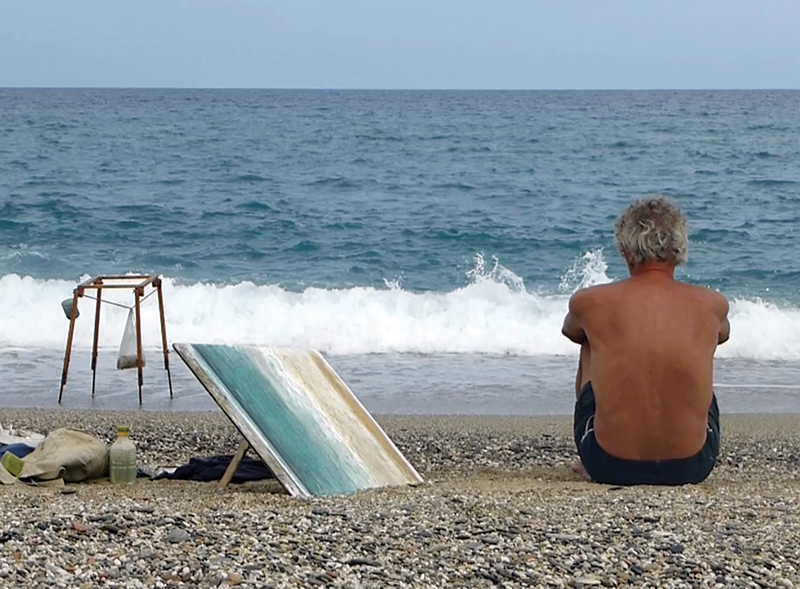
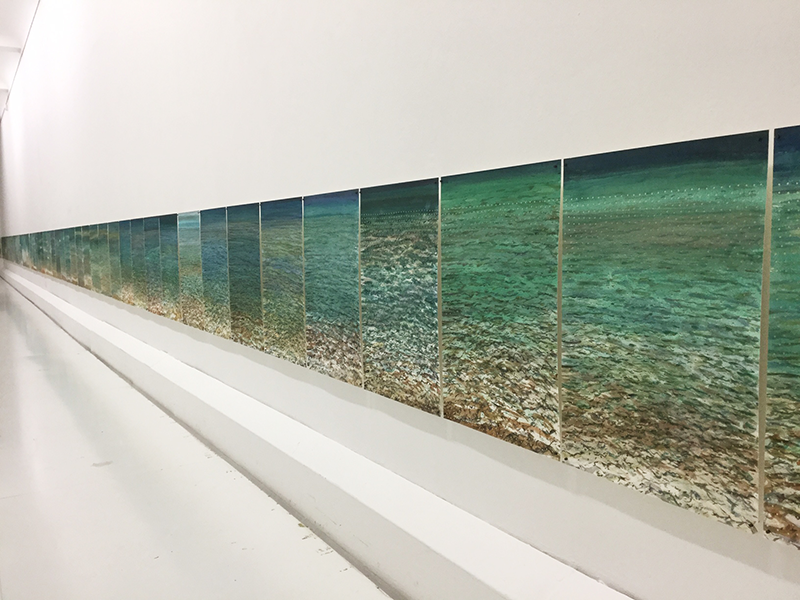
Does what you are currently doing fulfil you?
Yes, it fulfils me completely because it challenges me incessantly, and that despite the knowledge that a simple stone is much more complex than I can ever reproduce. On it, I can try to bring painting into the third dimension and it gets the lightness it has always wanted ;-).
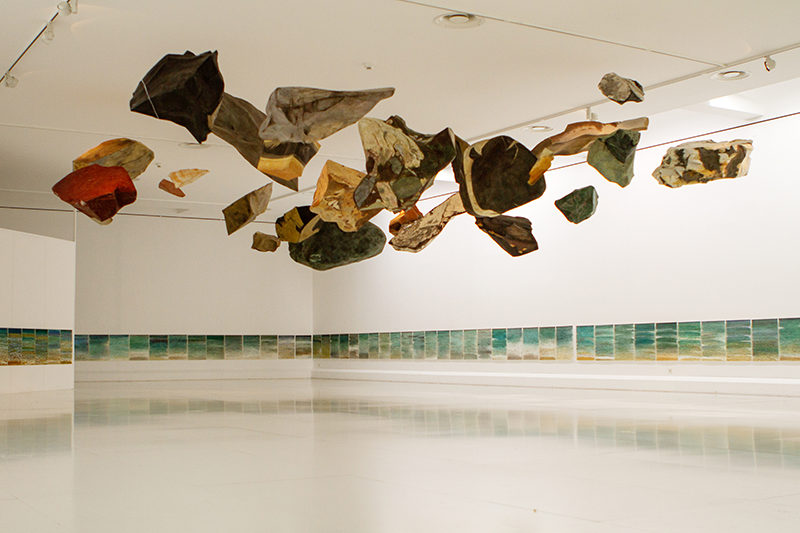
Do you think that you yourself have an influence on whether your activities are fulfilling?
I think so, especially because my work is based only on my own decisions and I want to endure the tensions this creates. I try to translate the ‘language’ of the stone into that of the organic material (hazel/bamboo/paper). And if this succeeds to some extent, I feel it is a confirmation for making this effort.
What or who inspires you in everyday life?
It is perhaps marvelling at the incredible beauty and diversity of nature, and how fascinatingly organic and inorganic bodies are built, combining sculpture and painting, so to speak. But it is also the special qualities of stone that have accompanied us since the beginning of mankind: To this day, it can be both a weapon and a tool, and it has a history of origin so different from that of man. It is no stranger to the stars…
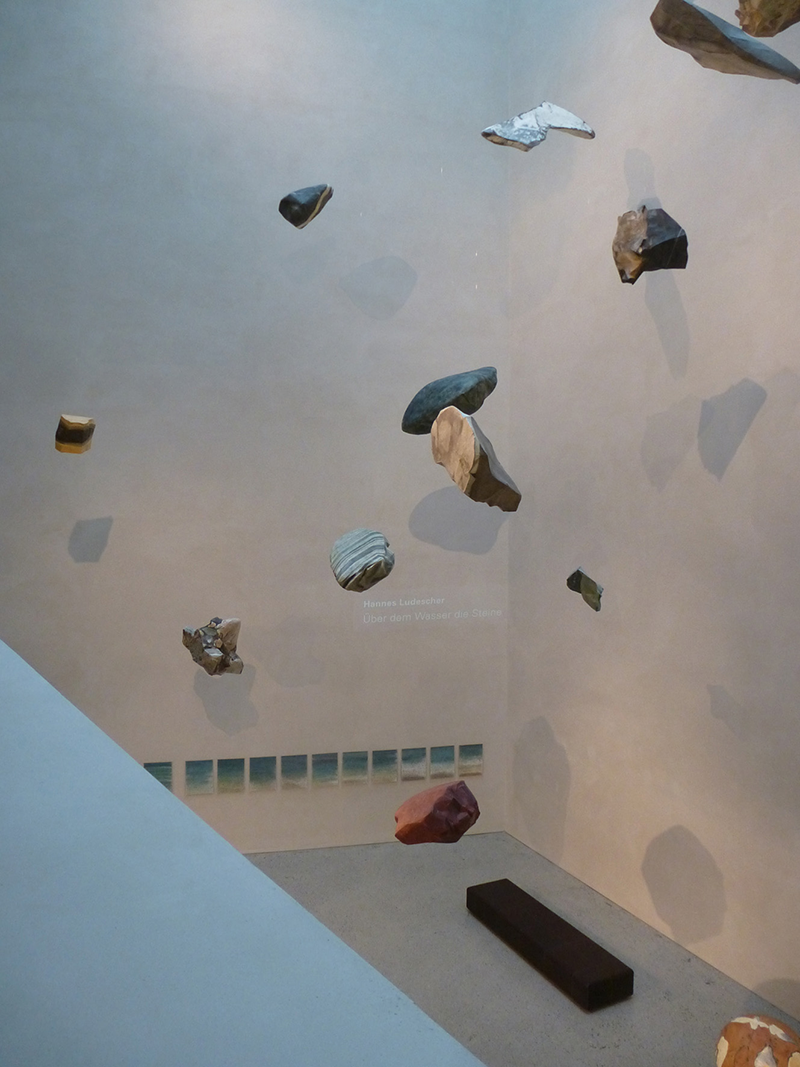
What or who gives you strength and energy in everyday life?
Actually, it is the dialogue with the stone and the recognition of its uniqueness. And still being together with my wife. Quite bourgeois ;-).
There are ‘magic moments’ when everything seems to fit. Moments that fulfil, inspire and give strength. Moments that confirm that the effort is worthwhile and that what you do is meaningful and valuable. Have you already experienced such moments in relation to your own activities?
I experienced a magical moment three years ago when my many ‘stones’ swayed and turned gently, weightlessly, in the 24m-high atrium of the Vorarlberg Museum in Bregenz, as if they had always been there. And that in turn reminded me of the fascination at being in the hayloft of my childhood, watching the dust dancing in the sunshine.
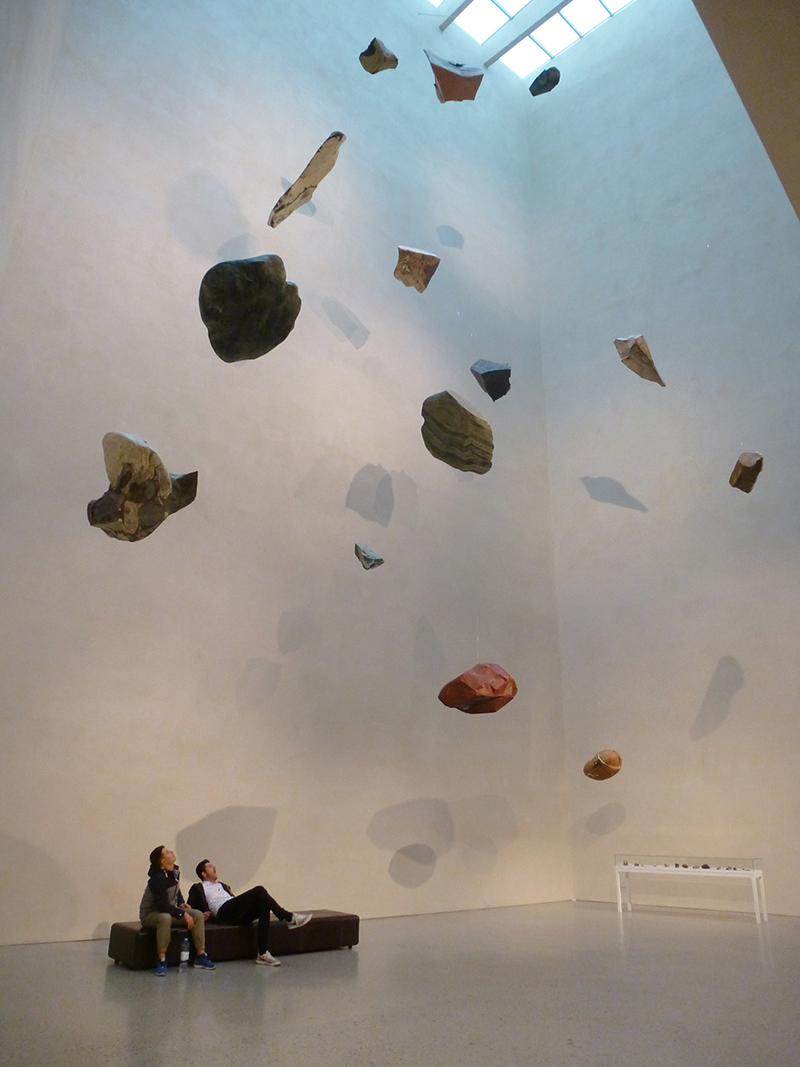
Do you actively do something for it, so that such ‘magic’ moments can happen?
Just keep going, hoping for a new star-stone sky. At the Engländerbau it materialised…
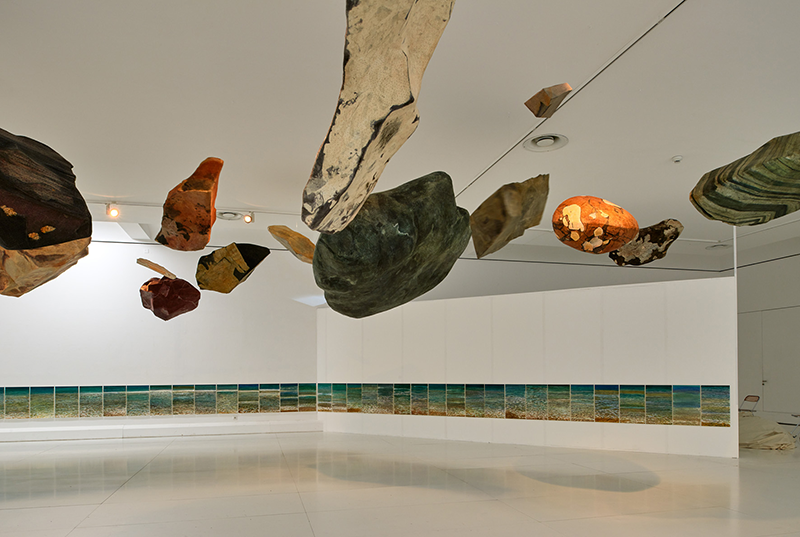
Are there moments when you doubt what you are doing?
Most likely these doubts arose after losing competitions or unsuccessful applications for scholarships. It felt like at school when I had missed a subject. Looking at my own work and believing in it helped me to digest these failures.
In retrospect, can you find something positive in difficult moments?
In difficult moments, when I reflect on where the blockages might come from, it can lead to very personal memories that I might not have wanted to know about before, or had forgotten.
Is there anything you would do differently in retrospect?
On the whole, not really.
Do you want to contribute to society with your activities?
In my first years as a student at the end of the sixties, social issues were very important in the everyday life of the academy and all authorities were questioned (and soon replaced by new ones). Art had left the scene…
I believe in art as a profoundly human expression that excludes nothing and is never final. This is how I want to understand my work: In order to float, one must not lose contact with the ground. Maybe in time this can turn out to be a small, constructive element in or for society.
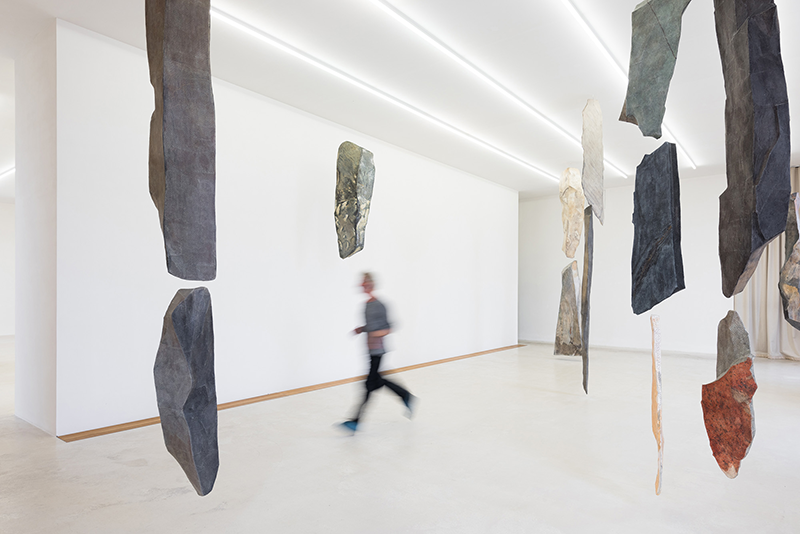
Is the recognition of other people or the public important to you?
It was always the personal reaction that was important for the development of the work, and not that of the public. When children like my work, I am especially pleased: the nine-year-old neighbour boy wrote in the guest book of the Kunstraum Engländerbau ‘The pictures are beautiful, the stones are better’….
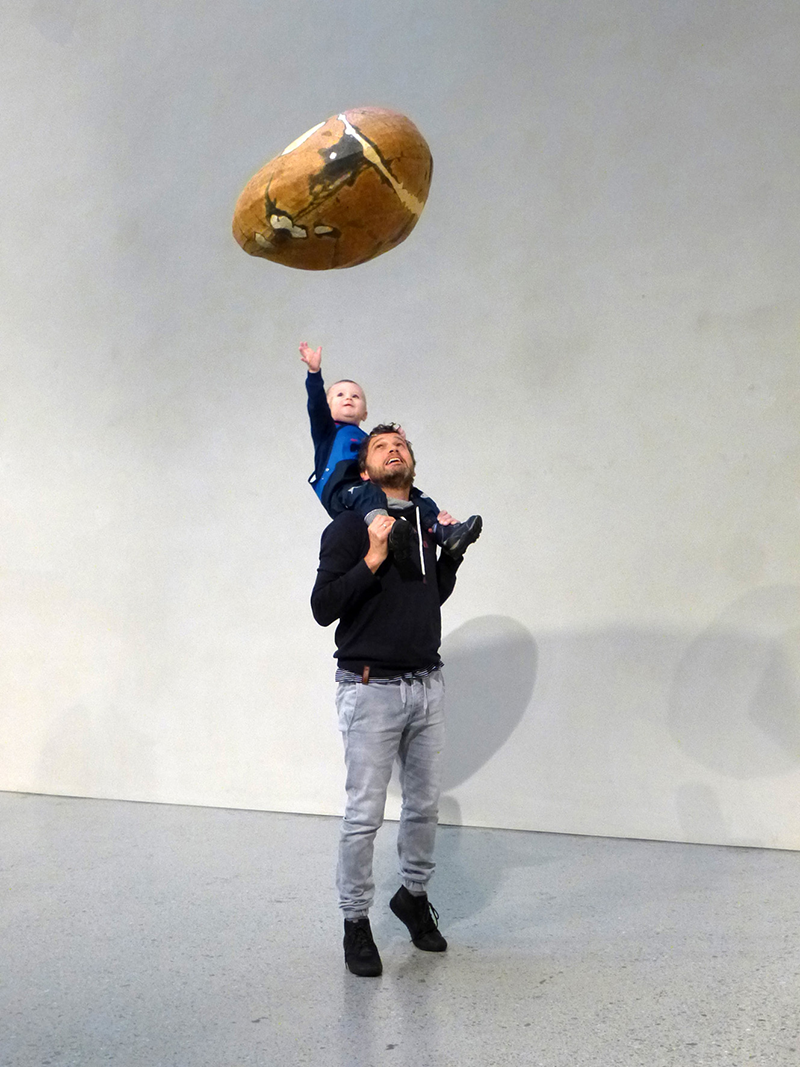
How well can you live from what you do professionally?
With the decision to pursue only this profession – I already had my teaching experience behind me – (Monika: ‘Don’t get bogged down!’), we accepted living below the official poverty line in most years. Nevertheless, somehow it always worked out. Every year we went painting in Greece and Spain with the children in our old VW bus… With my current small pension life is more relaxed, but not much different.
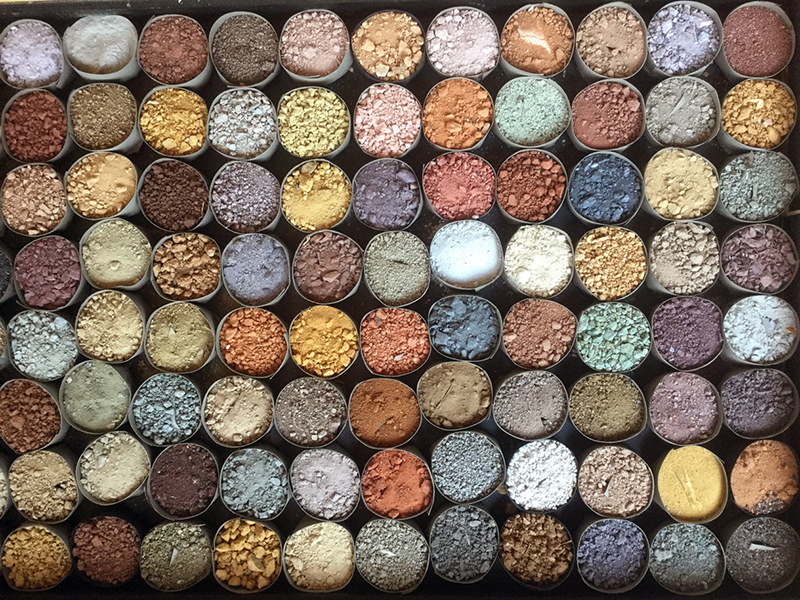
Is there something that is particularly occupying you at the moment?
Over the years, a lot of different paper objects have emerged. And I would like to continue to increase this diversity.
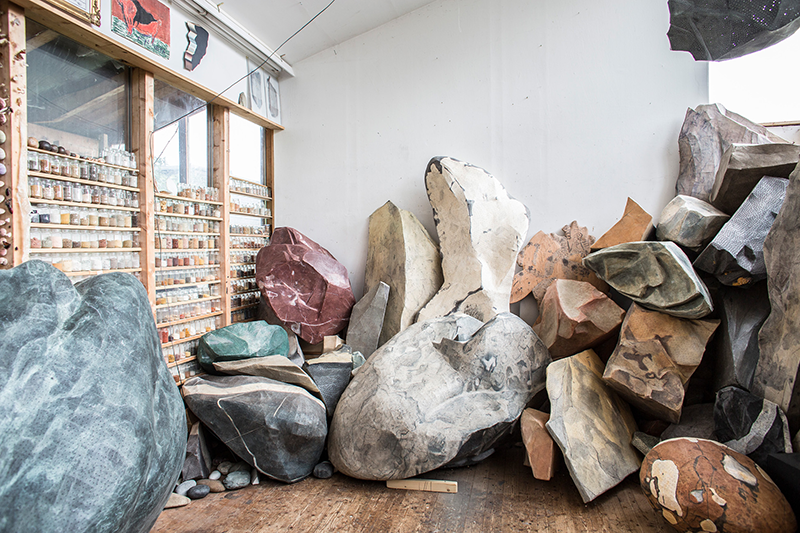
Is there something you would like to (increasingly) spend time on in the future?
Installing the stone mobiles in large, unused air spaces would be nice.
What are you most grateful for in life?
Actually for everything, as it has turned out.
Interview
Laura Hilti, January 2021
Credits
Portrait photo: Birgit Riedmann
Kunstraum Engländerbau Nr. 2: Tobias Ludescher
Kunstraum Engländerbau Nr. 3: Barbara Bühler
Architect’s office Baumschlager Eberle: studioWälder
Workshop: Petra Rainer
All other photos: Hannes Ludescher
This interview is part of the project ‘Magic Moments’ by Kunstverein Schichtwechsel, in which people are interviewed about their careers, activities and their magical as well as difficult moments.
Curated by Stefani Andersen and Laura Hilti, Kunstverein Schichtwechsel.
Supported by Kulturstiftung Liechtenstein and Stiftung Fürstl. Kommerzienrat Guido Feger.
>>> All interviews
